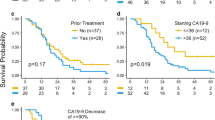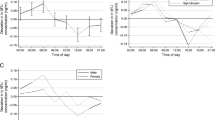Abstract
Prolonged infusions of 5-fluorouracil (5-FU) have been used since the early 1960s, but recently there has been a major resurgence of interest, partly because of the advent of electronically controlled portable infusion pumps. This paper looks at the published data on continuously infused 5-FU in breast cancer. As a single agent, bolus 5-FU has a response rate of around 25%; this includes many patients in older series who were chemotherapy naive. The overall response rate across all the studies with continuously infused 5-FU is 29%. However, the majority of these patients were heavily pretreated, and response rates of up to 54% have been reported. What is more encouraging is the response rate in combination chemotherapy--even for pretreated patients with metastatic disease, response rates up to 89% have been found. However, this level of benefit brings a new toxicity--palmar--plantar erythrodysaesthesia; and of course myelotoxicity still remains a problem in the combination regimens. Randomised trials to assess the role of infusional 5-FU are now indicated.
Similar content being viewed by others
Author information
Authors and Affiliations
Rights and permissions
About this article
Cite this article
Cameron, D., Gabra, H. & Leonard, R. Continuous 5-fluorouracil in the treatment of breast cancer. Br J Cancer 70, 120–124 (1994). https://doi.org/10.1038/bjc.1994.259
Issue Date:
DOI: https://doi.org/10.1038/bjc.1994.259
- Springer Nature Limited
This article is cited by
-
A peptide derived from interleukin-10 exhibits potential anticancer activity and can facilitate cell targeting of gold nanoparticles loaded with anticancer therapeutics
Communications Chemistry (2023)
-
5-Fluorouracil treatment induces characteristic T>G mutations in human cancer
Nature Communications (2019)
-
Emerging ways to treat breast cancer: will promises be met?
Cellular Oncology (2018)
-
Copper solid amalgam electrode as a simple and sensitive tool for voltammetric determination of the antineoplastic drug 5-fluorouracil in pharmaceuticals
Chemical Papers (2017)
-
Synergistic Effect of Cold Atmospheric Plasma and Drug Loaded Core-shell Nanoparticles on Inhibiting Breast Cancer Cell Growth
Scientific Reports (2016)




